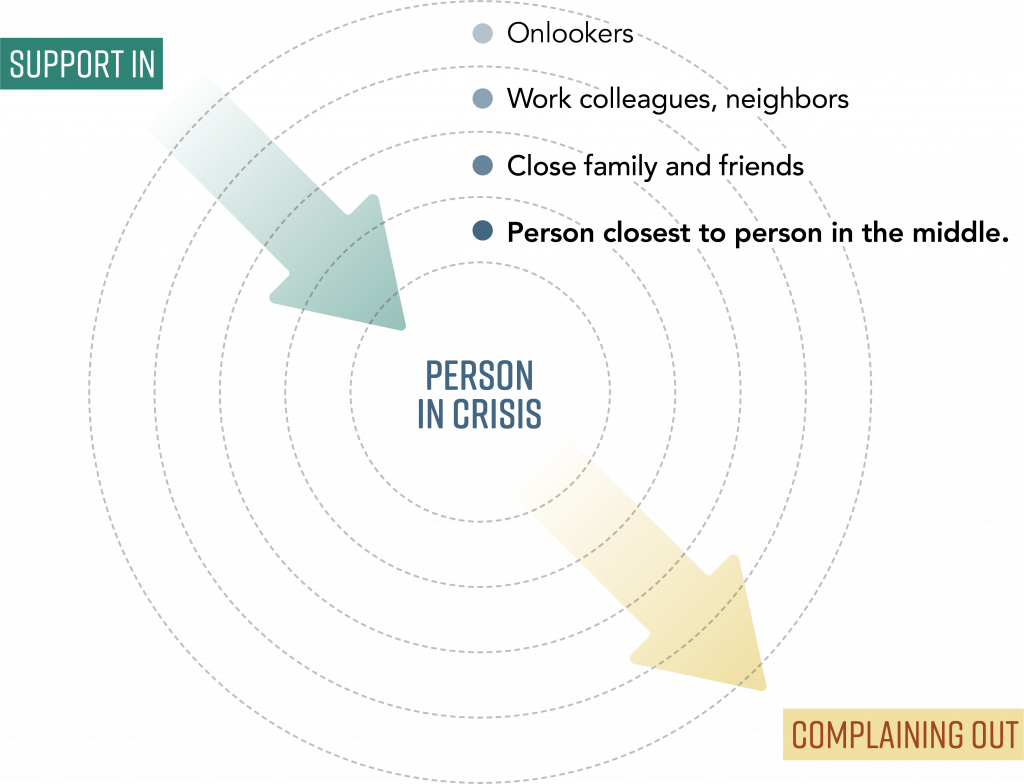Support in, complain out
Like a pebble dropped into a pond, circles radiate outward from the center of the situation. Which circle are you in?
Don't dump your emotions into the middle of people that are going through a crisis. Ask the friend of the family to ... what? Kind of support the family needs. And then, talk to your other friends about how sad you are so that you can show up without adding to the turmoil. Like, "I'm just so wrecked that your Mom has passed" and blah-blah-blah. And now, I'm gonna have to go from a place of ... I'm being asked to go from a place ... I don't have to there. I'm being asked to go from a place of feeling in my own depth and like, trying to find out how to be a person again. To like, care for this friend that came. I'm like, "Go have those feelings elsewhere. Get your own therapy-person. Like, don't ask me to be your therapist while I'm in the depths of grief. That's rude."
Susan Silk and Barry Goldman developed a simple exercise to help us know how not to say the wrong thing when we seek to support someone in crisis. It’s called "Ring Theory," and it’s very simple. Susan Silk gives the perfect example in the article:
When Susan had breast cancer, we heard a lot of lame remarks, but our favorite came from one of Susan’s colleagues. She wanted, she needed, to visit Susan after the surgery, but Susan didn’t feel like having visitors, and she said so. Her colleague’s response? “This isn’t just about you.” “It’s not?” Susan wondered. “My breast cancer is not about me? It’s about you?”
—Susan Silk and Barry Goldman
It can be helpful to evaluate your relationship with the grieving person.
Instructions: In the center ring, write the name of the person who is struggling. Moving outward from the center, write the name(s) of the people next closest to the person in the center. Repeat as many times as necessary.
- The person in the center of the ring can say anything they want to anyone in any circle. They can be frustrated, they despair - anything is fair game.
- People in the outer circles can only complain or ask questions about the details of the situation to people who are outside of their own ring.
- Only SUPPORT should move toward the person in the center ring.

Source: Ring Theory by Susan Silk and Barry Goldman originally appeared in this L.A. Times piece.